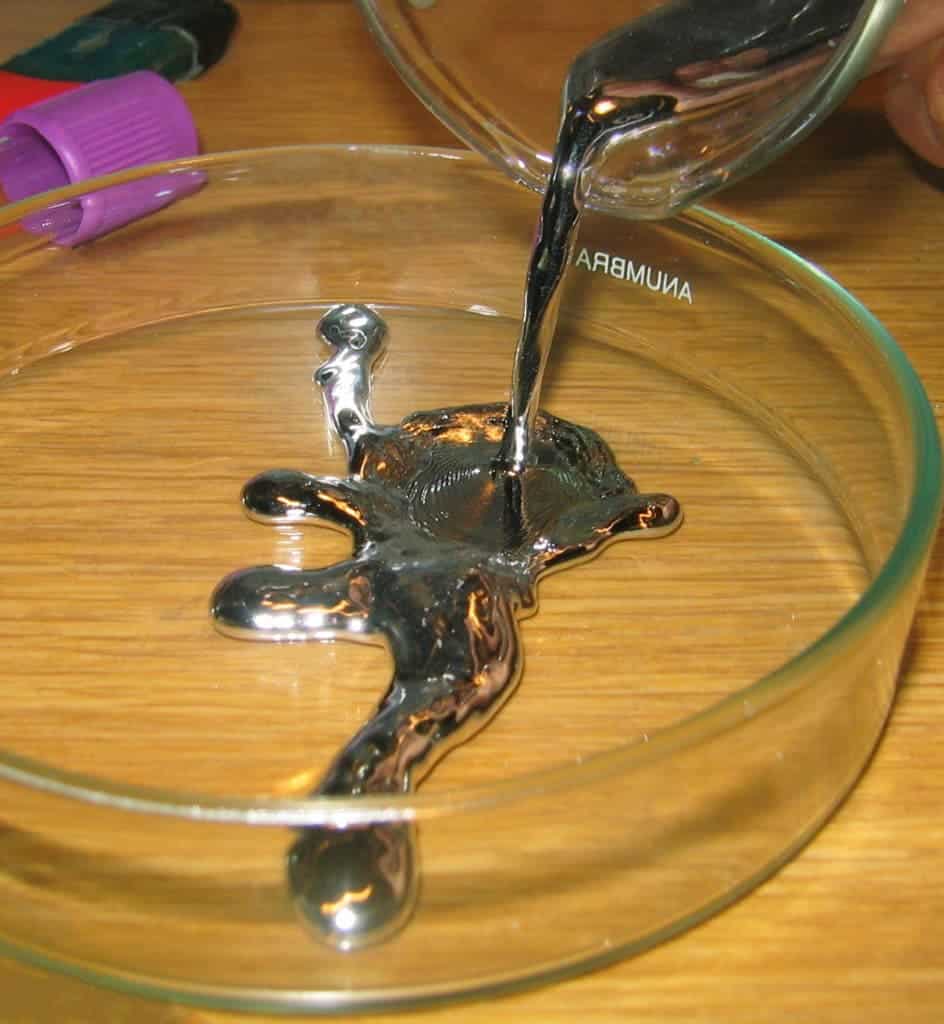Removing mercury from the water hasn’t been simple and no method has been so efficient or safe until now. Abdennour Abbas, Professor of Bionanotechnology in the Department of Bioproducts and Biosystems Engineering at the University of Minnesota, and his team created a low-cost super sponge that can soak up mercury from polluted water in just a few seconds. In addition, the sponge has some other useful qualities for water clean-up.

Mercury
Mercury is a very toxic substance that is found to some degree in virtually every body of water. Mercury occurs naturally in the earth’s crust, but human activities, such as mining and using fossil fuels, have released it into the environment. Bacteria change mercury into methylmercury, which becomes more concentrated in fish and humans. Mercury is dangerous because it is a strong neurotoxin.
In many lakes, the mercury concentration is between 0.01 and 12 nanograms per liter. Even at low concentrations, mercury can cause health problems. As you go further up the food chain, the amount of mercury increases a lot. Large fish can contain a lot of mercury. Babies whose mothers eat a lot of methylmercury while they’re in the womb may have damaged neurological development. Later in life, these babies could have problems with cognitive thinking, memory, language, and attention. A worrying prospect is that up to 10% of American woman of childbearing age have enough mercury in their blood to put a developing child at risk. In adults, effects can be seen on nervous, digestive and immune systems, lungs, kidneys, skin, and eyes.

Super sponge
The researchers at the University of Minnesota used mercury’s greatest strength to become its greatest weakness. Mercury is mostly toxic because it irreversibly binds to the selenium found in living organisms in proteins or enzymes. Selenium binds mercury very strongly.
The researchers used nanotechnology to grow selenium nanoparticles in and on a sponge. The sponge is so efficient that it removes mercury to below detectable levels from tap and lake water in under 5 seconds. You also need a surprisingly small amount of sponge to clean a large area. For example, a basketball-sized sponge could soak up 2 ng/L of mercury in a lake that is the size of a football field and up to 15 ft deep. The sponge can also be used to clean industrial wastewater in 5 minutes.

Once in the sponge, the mercury is bound to the selenium irreversibly and non-toxic. It can be disposed of safely in a landfill; it releases less mercury than the Environmental Protection Agency’s safety limit. As an added bonus, the sponge soaks up some other heavy metal contamination from water such as lead, copper, arsenic, and zinc. Importantly, it doesn’t take any essential nutrients from lakes. The sponge can work in water, regardless its acidity. Additionally, there aren’t any toxic effects on human cells and the sponge has strong antimicrobial properties.
All in all, this sponge is good for aquatic life, water quality, and health. It sounds like a win-win. If used industrially, the sponge could make wastewater treatment a lot more efficient and safe. Additionally, many lakes have high mercury levels that make it not safe to eat a lot of these fish. Using this sponge could clean up polluted lakes and make the fish safe to eat!
Journal reference: Ahmed, S. et al., 2017. A Nanoselenium Sponge for Instantaneous Mercury Removal to Undetectable Levels. Advanced Functional Materials.






